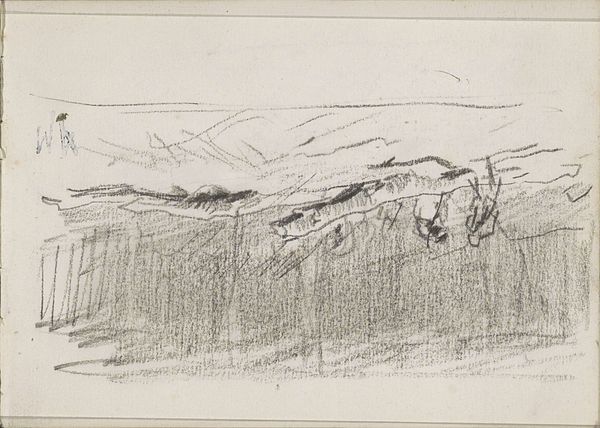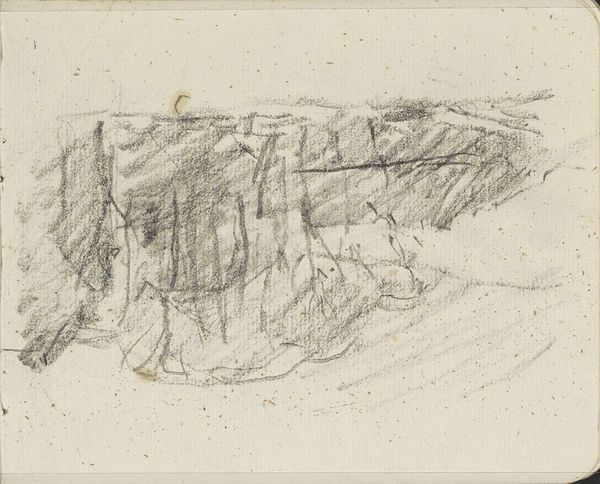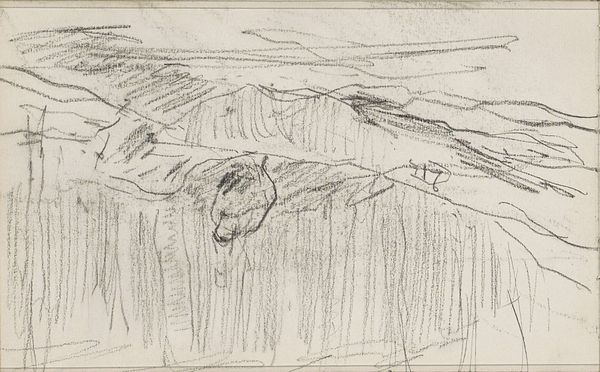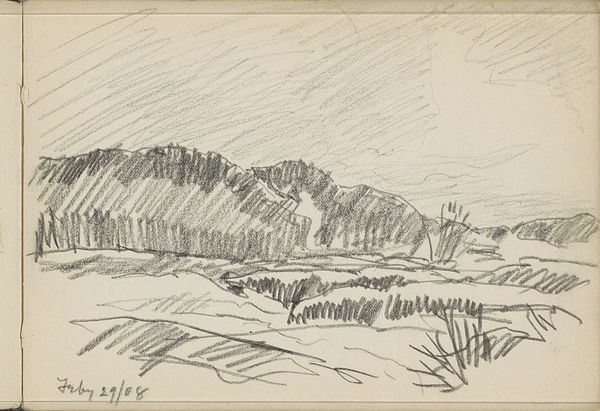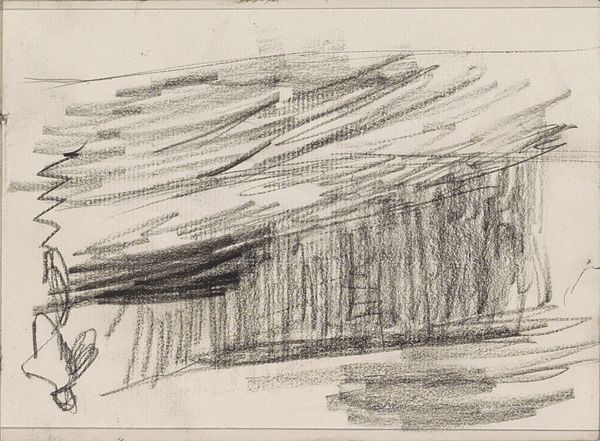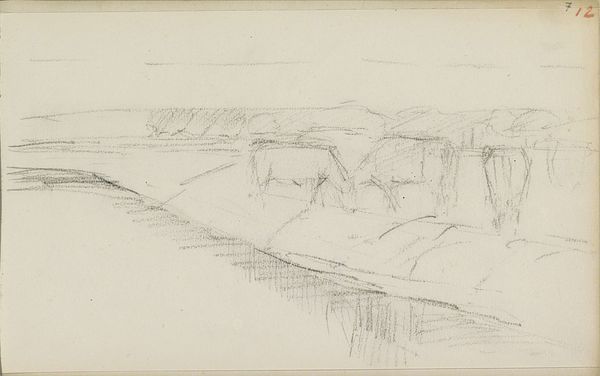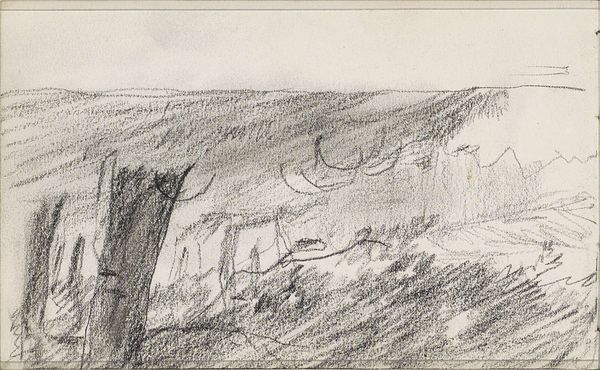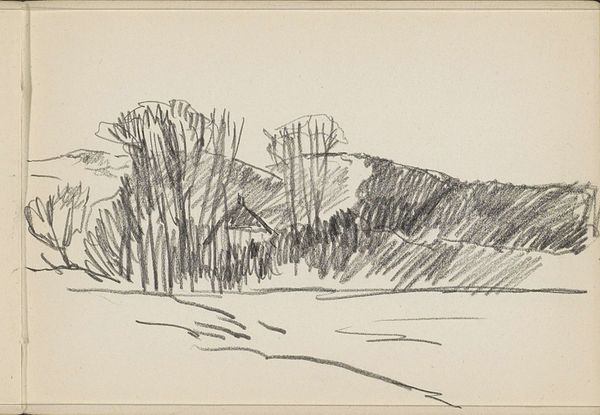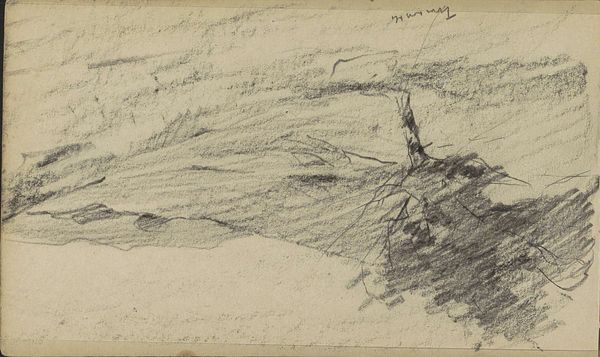
drawing, pencil, graphite
#
drawing
#
pencil sketch
#
landscape
#
form
#
personal sketchbook
#
sketchwork
#
pencil
#
line
#
graphite
#
sketchbook drawing
#
sketchbook art
Copyright: Rijks Museum: Open Domain
Curator: Alexander Shilling’s graphite drawing, titled “Duinlandschap,” possibly created in 1908, offers a glimpse into the artist's personal sketchbook. What stands out to you initially about this landscape? Editor: There’s an immediacy and intimacy that I find compelling. It feels like we’re catching a private moment, the artist capturing a scene that moved him, a kind of reverent interaction with nature itself. The starkness, almost like charcoal, evokes a rugged yet simple beauty. Curator: Indeed, the use of line is striking. The landscape isn’t prettified or idealized, it’s presented in an honest, perhaps even utilitarian manner. Considering the period, how might this relate to art's public role and societal expectations? Editor: Landscape art often served as a tool for national identity construction. It romanticized the land, creating myths. However, this feels different. It doesn’t necessarily aim to elevate the nation. It is a rough sketch, focusing on texture and form over propaganda. Curator: It could be argued this sketch bypasses the established institutions, and that it's created independently of academic pressure and expectations. How might we relate it to broader questions around gender, race or power structures, if at all? Editor: At the time, landscape painting was also seen as masculine territory. This drawing, perhaps, reflects that tension: nature tamed or nature encountered. And in thinking of whose land this is, how many hands touched this soil over time, it creates a broader narrative about possession and identity. Curator: Yes, the sketch becomes a document of seeing and feeling—rather than claiming. A historical approach allows us to look at what was not depicted as much as what was. Thank you. Editor: Absolutely, art calls on us to look with an activist’s eye, to examine history and power and imagine what's possible, a challenge to keep reimagining our visual and political landscape.
Comments
No comments
Be the first to comment and join the conversation on the ultimate creative platform.
